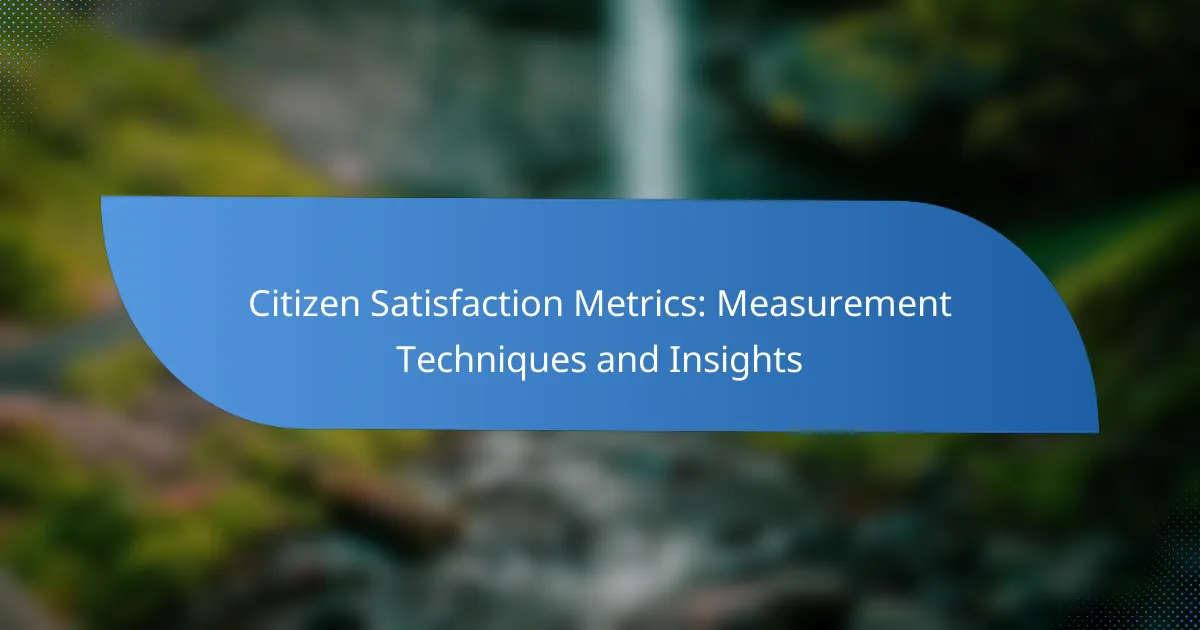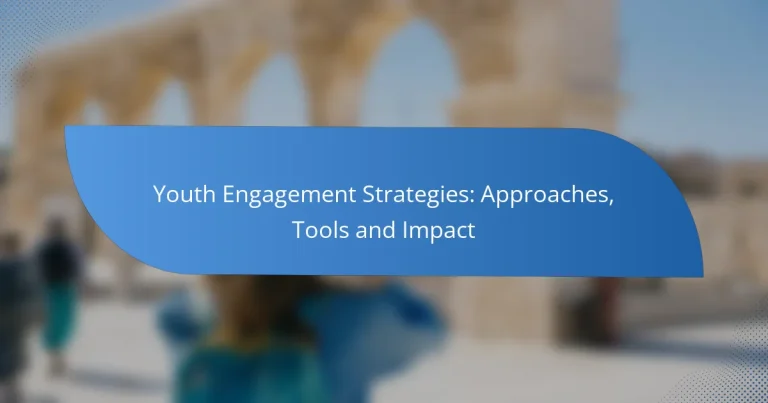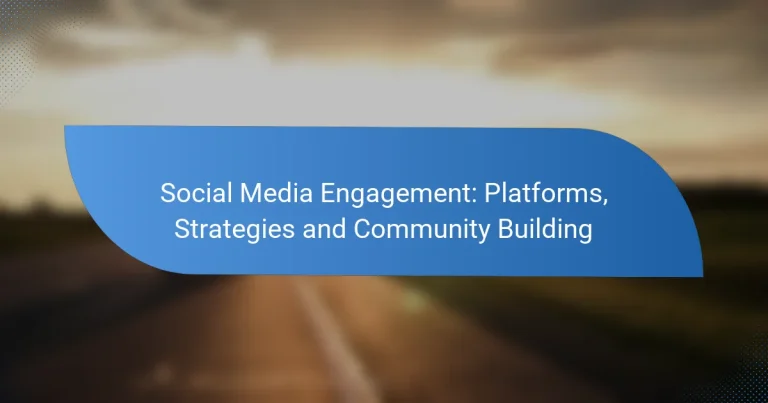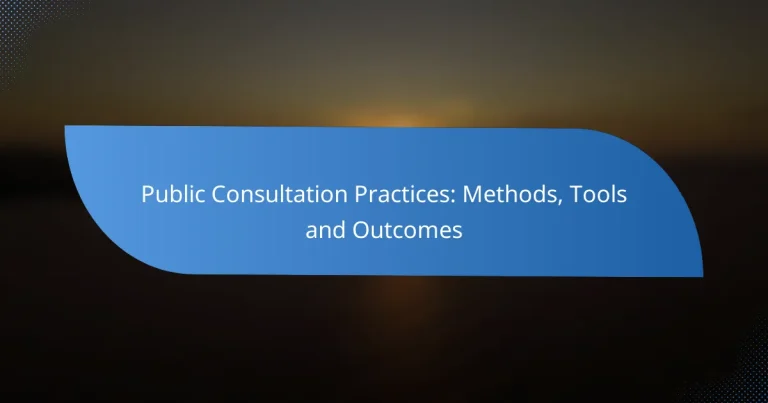Citizen Satisfaction Metrics: Measurement Techniques and Insights
Citizen satisfaction metrics are essential for understanding public opinion and evaluating the effectiveness of services provided by local governments. By employing various measurement techniques, governments can gather insights that inform service improvements and foster greater community engagement. Implementing these metrics involves clear performance indicators and leveraging technology to accurately capture citizen experiences and needs.
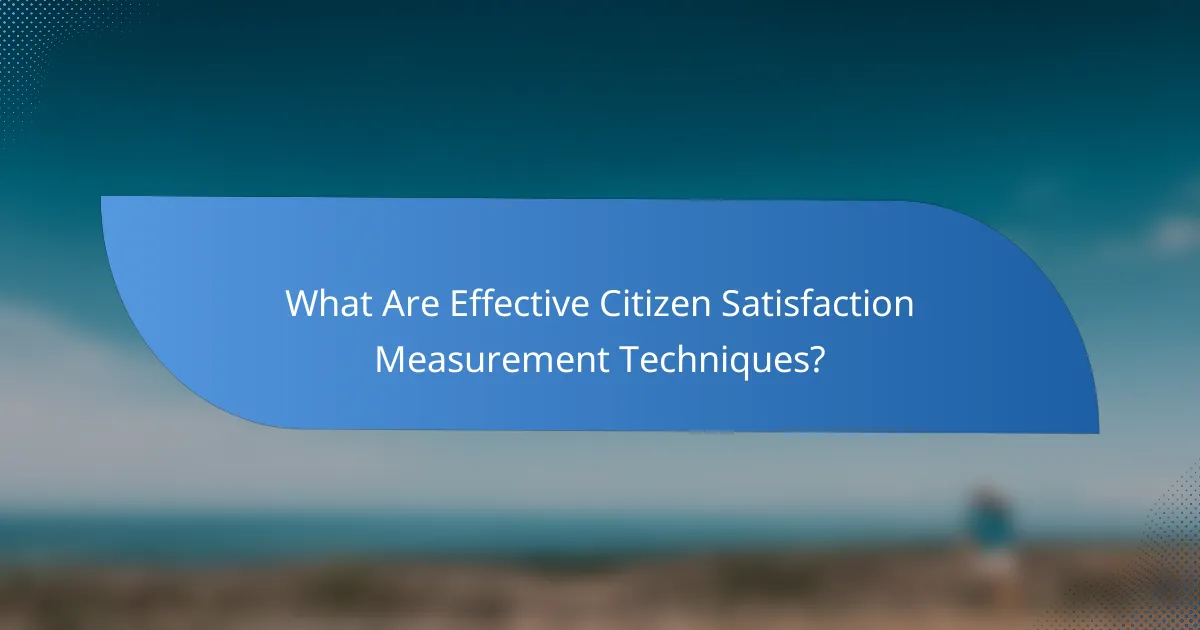
What Are Effective Citizen Satisfaction Measurement Techniques?
Effective citizen satisfaction measurement techniques include various methods that help gauge public opinion and satisfaction with services. These techniques provide valuable insights that can guide improvements in service delivery and enhance overall citizen engagement.
Surveys and Questionnaires
Surveys and questionnaires are widely used tools for measuring citizen satisfaction. They can be distributed online, via mail, or in person, allowing for a broad reach. Questions should be clear and concise, focusing on specific aspects of service delivery.
When designing surveys, consider using a mix of quantitative and qualitative questions to capture both measurable data and personal feedback. Aim for a response rate of at least 20-30% to ensure the data is representative.
Focus Groups
Focus groups involve small, diverse groups of citizens discussing their experiences and satisfaction levels. This qualitative method provides deeper insights into public perceptions and can uncover issues not captured in surveys.
To conduct effective focus groups, select participants that represent various demographics and experiences. Sessions should be facilitated by a neutral moderator to encourage open dialogue and honest feedback.
Net Promoter Score (NPS)
The Net Promoter Score (NPS) is a simple metric that measures citizen loyalty by asking how likely they are to recommend a service to others. Respondents rate their likelihood on a scale from 0 to 10, which categorizes them into promoters, passives, or detractors.
To calculate NPS, subtract the percentage of detractors from the percentage of promoters. A positive score indicates more promoters than detractors, which is a good sign of citizen satisfaction. Regularly tracking NPS can help identify trends over time.
Social Media Analysis
Social media analysis involves monitoring platforms like Twitter, Facebook, and Instagram for citizen feedback and sentiment regarding services. This method allows for real-time insights into public opinion and can highlight issues quickly.
Utilize social media listening tools to track mentions and sentiment analysis. Engaging with citizens on these platforms can also improve transparency and trust in public services.
Data Analytics Platforms
Data analytics platforms aggregate various data sources to provide comprehensive insights into citizen satisfaction. These platforms can analyze survey results, social media feedback, and service usage data to identify trends and areas for improvement.
When implementing a data analytics solution, ensure it complies with local data protection regulations. Use the insights gained to inform decision-making and prioritize areas that require immediate attention for enhancing citizen satisfaction.
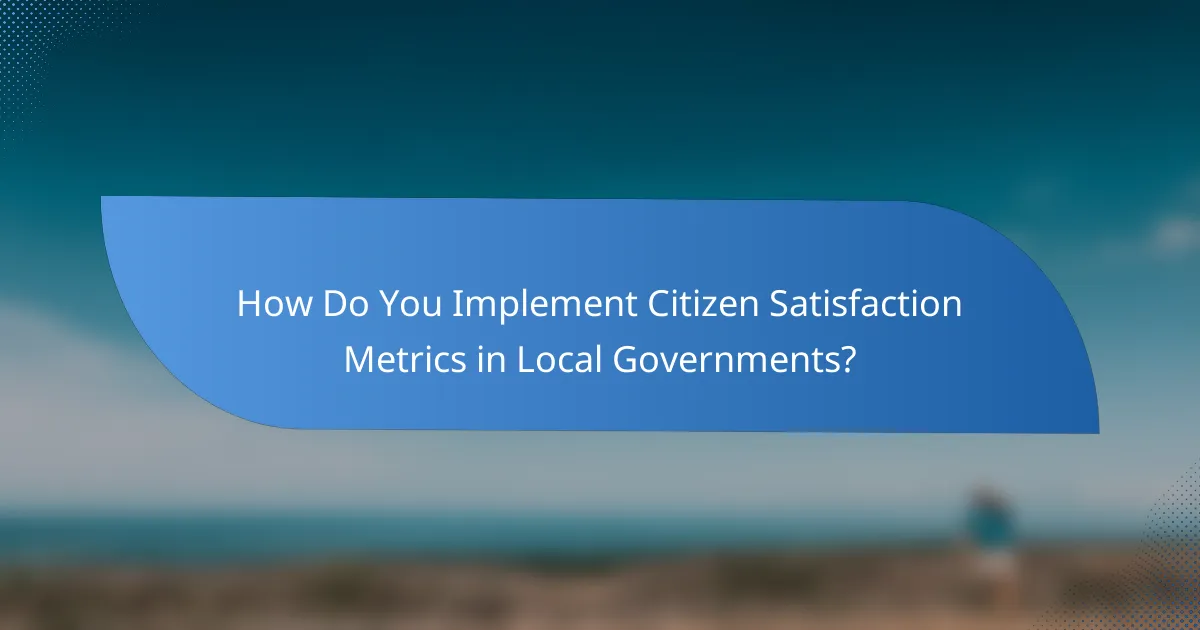
How Do You Implement Citizen Satisfaction Metrics in Local Governments?
Implementing citizen satisfaction metrics in local governments involves establishing clear performance indicators, engaging community stakeholders, and leveraging technology for data collection and analysis. These steps help ensure that the metrics accurately reflect the needs and experiences of citizens.
Define Key Performance Indicators (KPIs)
Key Performance Indicators (KPIs) are measurable values that demonstrate how effectively a local government is achieving its objectives related to citizen satisfaction. Common KPIs include response times to inquiries, service delivery satisfaction ratings, and the percentage of citizens who feel their needs are being met.
When defining KPIs, consider aligning them with specific goals such as improving public safety or enhancing community engagement. It’s beneficial to use a mix of quantitative and qualitative metrics to capture a comprehensive view of citizen satisfaction.
Engage Stakeholders
Engaging stakeholders is crucial for gathering diverse perspectives on citizen satisfaction. This includes not only government officials but also community members, local businesses, and advocacy groups. Regular meetings, surveys, and focus groups can facilitate this engagement.
Incorporating stakeholder feedback into the development of satisfaction metrics ensures that the indicators are relevant and reflect the community’s priorities. This collaborative approach can also foster trust and transparency between the government and its citizens.
Utilize Technology Solutions
Technology solutions play a vital role in implementing citizen satisfaction metrics effectively. Tools such as online surveys, mobile apps, and data analytics platforms can streamline the collection and analysis of feedback. These technologies allow for real-time monitoring of citizen satisfaction levels.
Consider using platforms that integrate with existing government systems to ensure data consistency and accessibility. Additionally, employing data visualization tools can help present findings in a clear and actionable manner, making it easier for decision-makers to respond to citizen needs promptly.

What Are the Benefits of Measuring Citizen Satisfaction?
Measuring citizen satisfaction provides valuable insights into public service effectiveness and community needs. It helps governments and organizations identify areas for improvement, leading to enhanced services and stronger community relationships.
Improved Public Services
When citizen satisfaction is measured, it highlights specific areas where public services may fall short. For example, feedback on local transportation can reveal issues with timeliness or accessibility, prompting necessary adjustments. By addressing these concerns, agencies can enhance service quality and efficiency.
Regular surveys and feedback mechanisms can be implemented to gather data on citizen experiences. This ongoing dialogue ensures that public services evolve in line with community expectations, ultimately leading to higher satisfaction rates.
Enhanced Community Engagement
Measuring citizen satisfaction fosters greater community engagement by involving citizens in the decision-making process. When individuals feel their opinions are valued, they are more likely to participate in local initiatives and programs. This engagement can result in stronger community bonds and increased civic pride.
Local governments can host town hall meetings or online forums to discuss satisfaction metrics and gather input. These platforms not only provide transparency but also encourage citizens to voice their concerns and suggestions, creating a collaborative environment.
Data-Driven Decision Making
Utilizing citizen satisfaction data enables governments to make informed decisions based on actual community needs rather than assumptions. This approach minimizes the risk of misallocating resources and ensures that initiatives align with what citizens truly value.
For effective data-driven decision making, it’s essential to establish clear metrics and regularly analyze feedback. Tools like dashboards can help visualize trends over time, allowing policymakers to adjust strategies promptly and effectively.
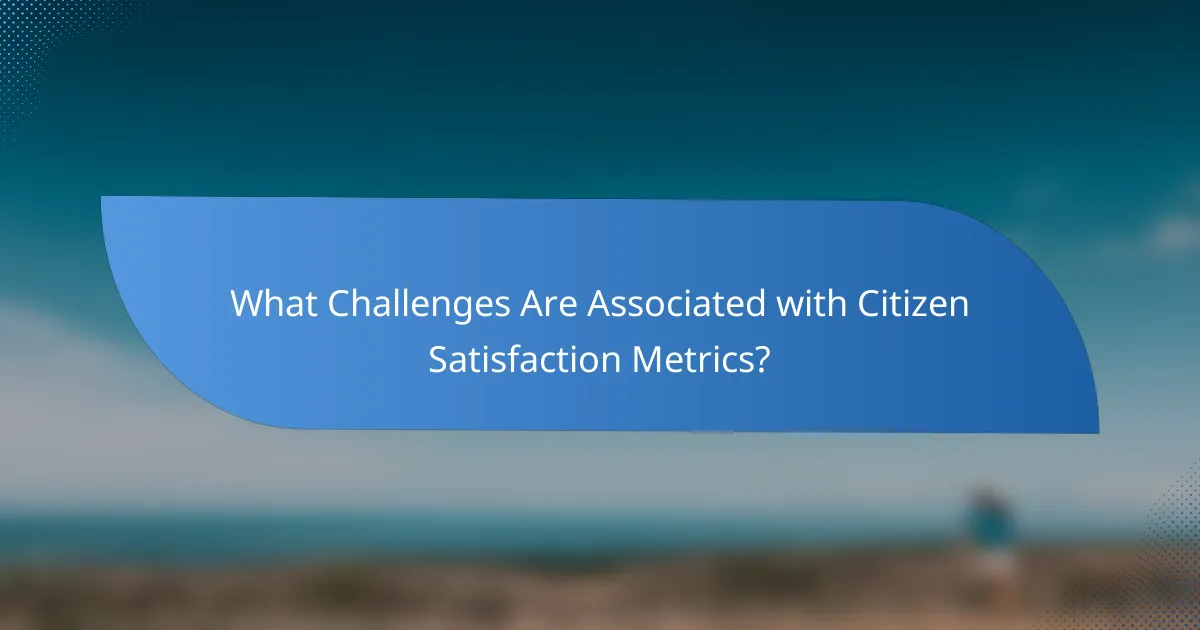
What Challenges Are Associated with Citizen Satisfaction Metrics?
Citizen satisfaction metrics face several challenges that can hinder accurate measurement and interpretation. Key issues include limitations in data collection methods, biases in responses, and constraints on resources available for conducting assessments.
Data Collection Limitations
Data collection limitations can significantly affect the reliability of citizen satisfaction metrics. Common issues include inadequate sample sizes, which may not represent the entire population, and reliance on outdated or poorly designed surveys. For instance, online surveys may exclude individuals without internet access, skewing results.
To improve data collection, consider using multiple methods such as face-to-face interviews, phone surveys, and online questionnaires. This mixed-method approach can help capture a broader range of citizen experiences and opinions.
Bias in Responses
Bias in responses can distort citizen satisfaction metrics, leading to misleading conclusions. Factors such as social desirability bias, where respondents provide answers they think are more acceptable, can skew results. Additionally, survey wording can influence how questions are interpreted.
To minimize bias, ensure that questions are clear and neutral. Pre-testing surveys with diverse groups can help identify potential biases before full deployment. Aim for anonymity to encourage honest feedback.
Resource Constraints
Resource constraints often limit the ability to effectively measure citizen satisfaction. Budget restrictions may prevent comprehensive surveys or the hiring of skilled analysts to interpret data. In many cases, public agencies operate under tight financial conditions, impacting their ability to gather and analyze feedback.
To address resource constraints, prioritize key metrics that align with organizational goals. Utilizing technology, such as automated survey tools, can also help reduce costs while maintaining data quality. Collaborating with academic institutions or non-profits may provide additional support and expertise.
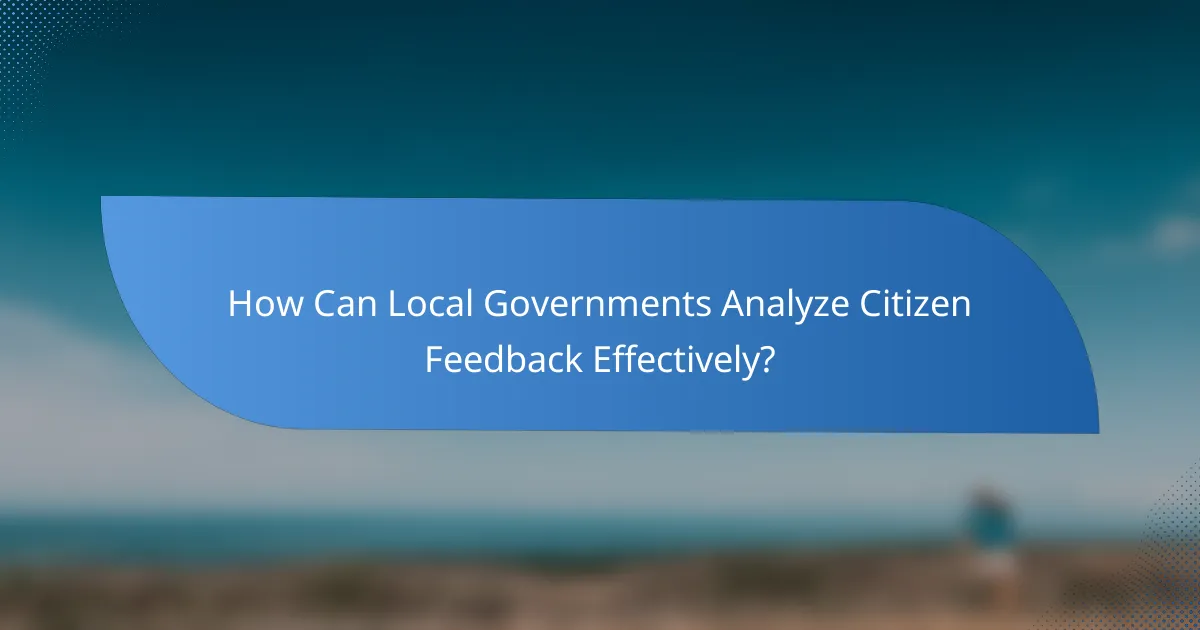
How Can Local Governments Analyze Citizen Feedback Effectively?
Local governments can analyze citizen feedback effectively by employing systematic methods that capture sentiments and benchmark performance. This involves using technology and established practices to gather insights that inform decision-making and improve services.
Sentiment Analysis Tools
Sentiment analysis tools help local governments interpret citizen feedback by analyzing text data from surveys, social media, and public forums. These tools use algorithms to classify sentiments as positive, negative, or neutral, providing a clear overview of public opinion.
When selecting sentiment analysis tools, consider factors such as accuracy, ease of use, and integration capabilities with existing systems. Popular options include natural language processing (NLP) platforms that can handle multiple languages and dialects, which is particularly useful in diverse communities.
To maximize effectiveness, local governments should regularly update their sentiment analysis tools and methodologies to reflect changing public opinions and trends. This ensures that the feedback remains relevant and actionable.
Benchmarking Against Best Practices
Benchmarking against best practices involves comparing citizen satisfaction metrics with those of other local governments or recognized standards. This process helps identify areas for improvement and sets realistic performance targets.
Local governments can utilize frameworks such as the International City/County Management Association (ICMA) standards to evaluate their citizen satisfaction metrics. By analyzing data from similar municipalities, they can gain insights into effective strategies and common challenges.
To implement benchmarking effectively, local governments should establish key performance indicators (KPIs) that align with their specific goals. Regularly reviewing these KPIs against best practices can guide continuous improvement and enhance overall citizen satisfaction.
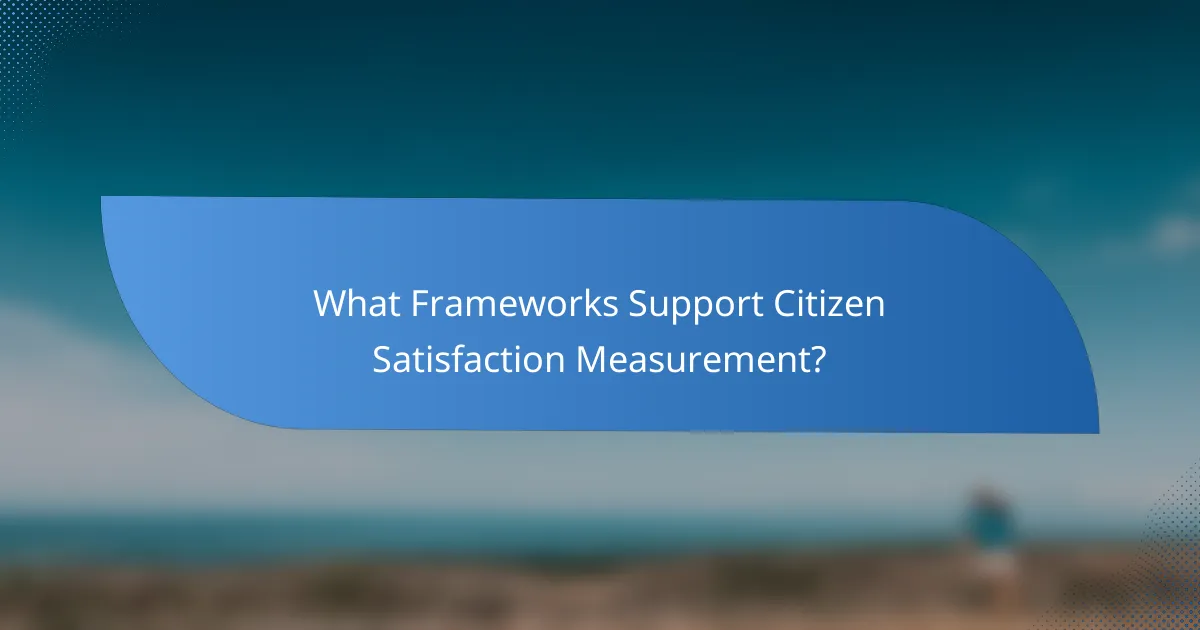
What Frameworks Support Citizen Satisfaction Measurement?
Several frameworks can effectively support the measurement of citizen satisfaction, providing structured approaches to assess and improve public services. These frameworks help organizations gather feedback, analyze data, and implement changes based on citizen needs and expectations.
Balanced Scorecard Approach
The Balanced Scorecard is a strategic planning tool that translates an organization’s mission and vision into actionable objectives across four perspectives: financial, customer, internal processes, and learning and growth. This approach allows public sector entities to align their operations with citizen satisfaction metrics by incorporating feedback into performance evaluations.
To implement the Balanced Scorecard, organizations should identify key performance indicators (KPIs) related to citizen satisfaction, such as response times, service quality, and accessibility. Regularly reviewing these metrics ensures that public services remain aligned with citizen expectations and can lead to targeted improvements.
Logic Model Framework
The Logic Model Framework provides a visual representation of the relationships between resources, activities, outputs, and outcomes in a program. This framework helps public agencies clarify how their services contribute to citizen satisfaction by mapping out the intended impacts of their initiatives.
When using the Logic Model, agencies should focus on defining clear objectives and measurable outcomes related to citizen satisfaction. By regularly assessing the outputs and outcomes, organizations can identify areas needing improvement and make data-driven decisions to enhance service delivery.
